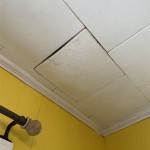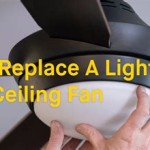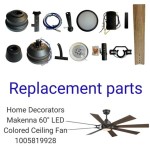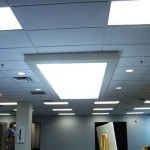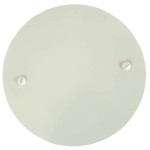Understanding Ceiling Fan Capacitors: A 3-Wire Guide
Ceiling fans, essential for comfort and energy efficiency, rely on a crucial component: the capacitor. This electrical device plays a vital role in the fan's operation, enabling the smooth and efficient rotation of its blades. A standard ceiling fan motor typically utilizes a 3-wire capacitor, which is essential for creating the necessary phase shift required for the motor to function.
This article aims to shed light on these essential components, explaining their purpose, types, and considerations for selecting the right one. Understanding ceiling fan capacitors empowers homeowners and DIY enthusiasts to properly maintain and troubleshoot their fans, ensuring optimal performance and longevity.
The Role of Capacitors in Ceiling Fan Operation
Capacitors act as energy storage devices, storing electrical energy in an electric field. In ceiling fans, capacitors are crucial for starting and running the motor. The fan's motor usually employs a single-phase AC power supply, which lacks the necessary phase shift for the motor to function. This is where the capacitor comes into play.
The 3-wire capacitor has two primary functions:
- Starting: When the fan is initially switched on, the capacitor provides an electrical pulse to the motor, giving it the initial jolt it needs to begin rotating. This starting capacitor helps overcome the motor's inertia, ensuring a smooth and efficient start-up.
- Running: Once the fan is running, the capacitor continues to play a role. It maintains a phase shift between the motor's winding currents, ensuring a stable and smooth operation. This running capacitor helps the fan maintain a consistent speed and provides a quieter performance.
Without the capacitor, the motor would struggle to start and run, leading to a variety of issues such as humming noises, slow rotation, or even complete failure.
Types of Ceiling Fan Capacitors
Ceiling fan capacitors come in various configurations, each designed for specific applications and motor types. The two primary types are:
- Single-Value Capacitors: These capacitors offer a fixed capacitance value, typically expressed in microfarads (µF). They are commonly used in fans with a single speed setting and can be identified by their single-value marking. These capacitors are usually found in older fans, and they often have a limited lifespan.
- Dual-Value Capacitors: These capacitors feature two separate capacitor sections with different capacitance values, allowing for multiple speed settings. They are typically used in modern fans with two or three-speed options. These capacitors offer greater flexibility and efficiency, allowing the fan to adjust its speed based on the user's needs.
The type of capacitor used in a fan is often determined by the specific motor design. It is crucial to select the right capacitor type to ensure proper operation and avoid potential damage to the fan.
Selecting the Right Ceiling Fan Capacitor
Choosing the correct capacitor for your ceiling fan is essential for optimal performance and longevity. Here are some key considerations:
- Voltage Rating: The capacitor's voltage rating should match or exceed the voltage supplied to the fan. Typically, ceiling fans operate on 120 volts, so a capacitor with a 120-volt or higher rating is typically sufficient. Check the fan's manual or the capacitor's label for specific requirements.
- Capacitance Value: The capacitance value should match the specific requirements of your fan's motor. Incorrect capacitance values can lead to poor performance, overheating, or motor damage. Consult the fan's documentation or contact the manufacturer for the correct capacitance value.
- Type: As discussed earlier, the type of capacitor must match the fan's design, whether it's a single-valued or dual-valued capacitor. Incorrect types can result in improper speed settings and potential malfunction.
- Size and Mounting: Ensure that the capacitor's size and mounting configuration are compatible with your fan's setup. The capacitor should be secured firmly to prevent movement or vibrations.
It is always advisable to consult a qualified electrician for professional advice regarding capacitor selection and replacement if unsure.

Single Capacitor Three Wire Dan S Fan City Ceiling Fans Parts Accessories

Ceiling Fan Capacitor Cbb61 1 5uf 3uf 3 Wire More Than 1600 Sold Ebay

Hqrp Ceiling Fan Capacitor Cbb61 1uf 2uf 3 Wire

Ceiling Fan 3 Wire Connection Calling Capacitor

Cbb61 Ceiling Fan Capacitor 1 5 2 5uf 250vac 3 Wires With Speed Switch Ebay

Hqrp Ceiling Fan Capacitor Cbb61 1 5uf 3uf 3 Wire

Cbb61 1 5uf 2 3 Wire 250vac Ceiling Fan Capacitor Wires Shop2 Gateway

3 Wire Capacitor 0 5uf 1uf Cbb61 250 Vac 50 60hz Ceiling Fan Motor 5

Ceiling Fan Connection Of Three Wire With Capacitor Wiring Diagram

3 In 1 Capacitor Tal
See Also



